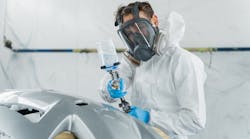Having a good working relationship with insurance companies means more than just being friendly. The key here is to implement a process that achieves the goals of your shop and allows you to provide your customers with a relatively easy and pleasant experience.
As a management consulting company for independent repair shop owners, I work with a lot of collision centers. From what I hear, the relationship between the shop and the adjuster is almost always pleasant and efficient. While there is not always perfect agreement on the work that needs to be done or the price points involved, both the shop and the insurer want to best serve their customer. The insurance company relies on the shop for relevant information pertaining to the claim and, whether it’s returning a phone call or responding to a supplemental request, the shop expects prompt service from the insurance company.
It all starts with communication
There’s a skill set involved here that requires a fine balance of negotiation and knowledge. It is imperative that you have a good understanding of how insurance works, what the different types of coverage are and how it relates to your customers and your business. This will help you better identify what your customer needs and allow you to educate them and give them their options. For example, if a customer’s policy falls short on his preferred parts, you should know what alternatives are available, like whether or not he can use OEM, aftermarket or used parts.
Although the purpose may be different, you and the insurance company have similar goals. As the repairer, you want to maximize profits while completing the job quickly and accurately. Clearly, the estimate impacts the profitability of the job. That being said, you need to be able to negotiate a good repair price.
It’s also not unrealistic to expect your adjuster to return your emails and phone calls, approve and pay supplements promptly, turn in the completed paperwork so you have an accurate appraisal to work with and be responsive when you need a reinspection.
The insurance company’s primary goal is to minimize claims costs to increase their own returns. When communicating your needs to the insurance company, it’s important not to lose sight of their expectations. Listen to what is needed from your shop to help aid in a smooth transaction. If you do not completely understand, speak up and ask questions. You are your customer’s advisor and informant. You want the adjuster to have a positive experience. If he or she is thorough and helpful throughout the process, you want him or her to work with you again. This relationship can potentially lead to referrals or having the adjuster put in a good word at the office.
In addition to advising your customer, you may often feel like an educator for the insurance company. The automotive industry is constantly changing. Just in the last 10 years automobiles have become much more complex and this impacts the processes and requirements of the repair. The metals used and designs of the vehicles are completely different. For example, you now have lane departure control, bumper sensors and other features that are specific to the make and model of the vehicle. Collision repair shops often struggle with how best to keep up with these changes and the insurance adjuster is also trying to remain current.
Be the advocate. Communicating and sharing this information can result in fewer misunderstandings, more satisfied customers and work that can be substantiated.
Make documentation a standard operating procedure in your shop
By documenting repairs, gathering OEM repair information and utilizing the available industry resources, it is reassuring to the customer that you have their best interests in mind. Always write estimates in the estimating format the insurance company will use and write only damage you can see and can substantiate. Don’t ever guess. If you take initial notes and photos before the vehicle is torn down, this will satisfy the insurance company requirements, and give you a good overview of the visual damage. Then, after the tear down, finalize your estimate.
By keeping a process in place and making sure that everyone in your shop who touches the vehicle has access to this process, you are automatically reducing the risk of errors. In the event that the insurance company questions a repair, you have the photos, notes and details you need to provide thorough and complete answers. Not only will you need to document the repair for the insurance company but you will also need to explain the estimate to your customers. Before they leave your facility, think of every possible question that your customer could ask about what is being fixed or replaced, with what kind of part and why.
The key here is to communicate and document. Understand the what, how and why of the claim and make sure your estimator understands them as well. Insurance adjusters are your friends. You both have a customer that is depending on you to resolve their repair issues as quickly as possible with little to no out-of-pocket expenses. Your loyalty is to the customer. Keep the lines of communication open and honest on all fronts and extend the same courtesy to the insurance company as you expect in return. Do you want answers quickly? If so, you should set that precedent by promptly replying to their reaches. If something is being held up on your end, ask the questions you need to resolve it.

